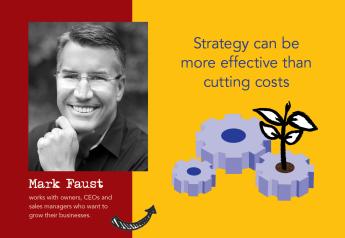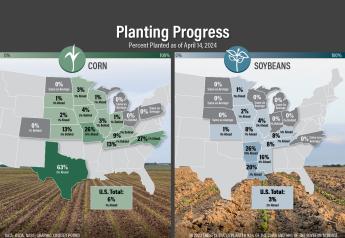4 Questions Farmers are Asking about Carbon Markets

As farmers wade through the ever-deepening amount of carbon information available, they routinely ask for answers to these four questions.
1. How do I know which carbon program makes the most sense for my farm?
It depends on your goals. Consider how much time and effort you want to invest, how long your land will be committed to the program and what kind of financial payback you want to achieve.
Know how each program will compensate you. For instance, some programs pay based on outcomes achieved.
“We actually model and measure both the soil sequestration and the emissions reduction from the field, which requires farmers to submit a bit more data but tends to provide them more economic benefit,” says Ben Gordon, carbon and ecosystems global portfolio lead for Corteva Agriscience.
Some other carbon programs pay farmers for implementing practices, such as using no-till or planting cover crops. This strategy tends to require less data and work on the farmer’s part. The downside is it’s likely to pay less per acre. However, you might be paid sooner versus with a program that is outcome-based, which can take up to a year before a payment is made because of the data collection and crunching required.
2. Why should I bother participating?
In years when margins are thin, an annual carbon payment can help bulletproof your balance sheet.
Beyond income, some farmers are interested in the carbon industry as an opportunity to learn practices and benefit from technology that can help them build a strong, more sustainable future.
“Agronomy, agronomy, agronomy is the name of the game,” says Dan Hansen, who farms near Avoca, Iowa. “Obviously, there has to be an ROI, but we have to continue to examine our practices and grade ourselves on how we can do better and improve.”
In the past five years, Hansen says he has experimented with cover crops as well as different nitrogen tools that have helped him see value in variable-rate nitrogen or reduced nitrogen use, intensive grid sampling and variable-rate fertilizer.
“We want to continue to see soil health improve on our farm, so we’re evaluating (programs and practices) and risks while we’re trying to move the needle forward and improve ROI in the process,” he adds.
3. Are carbon markets going to be around, or are they just hype?
As in any new industry, not every program will succeed. However, companies both within and outside agriculture (Disney, IBM, Microsoft, to name a few) are making long-term commitments that extend into the next decade.
“We’re talking real transactions that are already happening, so that gives me confidence,” says Corteva’s Gordon. “I'd urge farmers to make sure that they're signing up for programs that have the flexibility to evolve with the market, not against it,” he adds.
4. How can I protect myself from a bad decision or being taken advantage of?
Explore what the various companies are offering. Talk with other farmers, and seek counsel from your banker, agronomic consultant and legal representative, who can help you evaluate the fine print in contracts.
In addition, like with other practices, start small and scale up as you become more comfortable and confident with the various programs.
For more insights on the carbon marketplace, check out these resources:
The rapid pace of U.S. carbon market activity has left many farmers dazed and confused. To help answer your questions, Farm Journal is sharing the first-ever carbon market comparison tool to assess how several of the most prominent frameworks stack up. We will continue investing in enterprise reporting as carbon markets mature and evolve.







